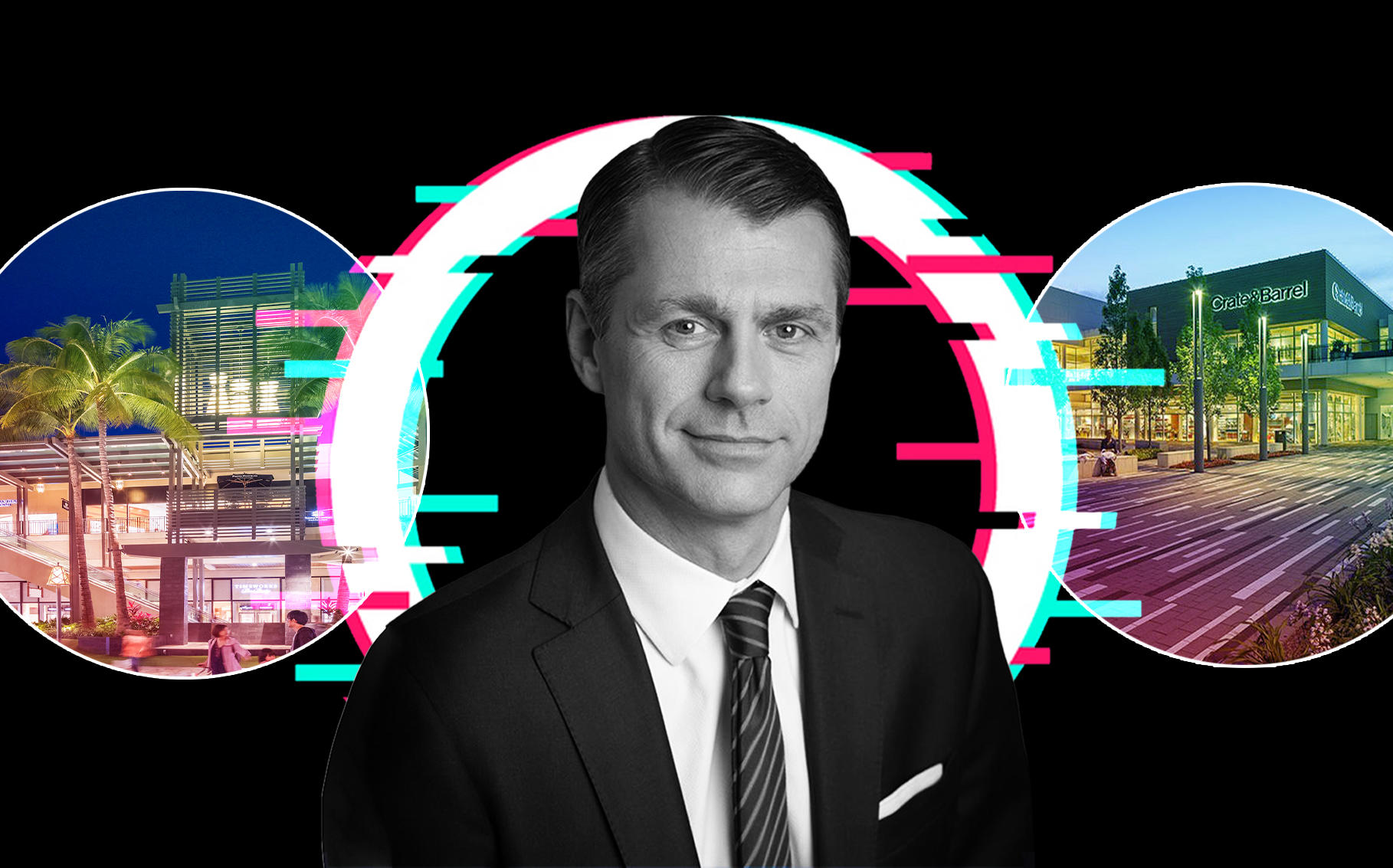Trending
Behind Brookfield’s critical Covid moment
Real estate giant’s high-stakes retail bets raise new questions at time of extreme uncertainty

Brookfield Asset Management is taking a bold step in the thick of the Covid-19 crisis.
The Canadian real estate giant is looking to invest $5 billion in retail companies hit hard by the pandemic, the Wall Street Journal reported on Wednesday. Brookfield is expected to focus on stores that had revenues of at least $250 million prior to March, and the company may look to raise additional capital to bolster the investments.
Thuy Nguyen, Moody’s lead analyst on Brookfield Property REIT, said the strategy is a smart move and shows the company still views retail as an important part of its overall strategy. “From our perspective, this is good for retailers with viable business models that will rebound but need liquidity to make it through this crisis,” she said.
But some say Brookfield’s previous bets on the struggling mall industry look all the more risky due to the highly unpredictable coronavirus.
Strict social distancing measures and stay-at-home orders have forced retail properties across the country to shutter, magnifying the many problems retail tenants and landlords were already facing. That trend could complicate Brookfield’s $14.8 billion acquisition of mall owner General Growth Properties, which turned heads when the deal closed in 2018 during a much healthier economy.
Now, as it gets ready to pour billions more into the beleaguered retail market, Brookfield may need to cook up a new long-term strategy to navigate a drastically different consumer market, observers told The Real Deal.
And several zeroed in on the company’s shopping malls as the most vulnerable part of its $500 billion-plus portfolio. Moody’s, for one, is weighing a downgrade of Brookfield’s retail REIT — largely due to hurdles the company faces with refinancing $1.7 billion in debt coming due this year.
Brookfield Property Partners, which will hold its quarterly earnings call on Friday, declined to comment for this story.
The company’s goal of reinventing at least 100 GGP malls across the country “was an ambitious plan to start with,” said Joseph French Jr., a commercial broker at Marcus & Millichap who specializes in shopping centers. “Out of all of retail, the malls are the product that is going to be the most damaged long term.”
But, to be sure, skepticism over Brookfield’s high-stakes mall bets in the face of Covid-19 doesn’t equate to concerns about the company as a whole. RXR Realty’s Scott Rechler predicted that Brookfield would be well positioned to take advantage of troubled assets once the dust settles given the diversified company’s track record with salvaging underwater companies and properties.
“They’ve done a good job, historically, pivoting. They have a strong balance sheet,” he said, noting that there is “distress in the system, and my guess is they’re well positioned to take advantage of it.”
On top of the $5 billion the company may reportedly invest in struggling retailers, Oaktree Capital Management — which Brookfield bought a majority stake in last year — is looking to raise $15 billion for a new distressed debt fund. And while Oaktree plans to spread its bets across multiple industries, the company is no stranger to opportunistic real estate plays.
“If they can hold out until they end of the year, they’ll be back in good shape,” argued G&M Realty founder Jerry Wolkoff, the developer behind Long Island’s Heartland Town Square megaproject.
The fall of the mall
Essential to Brookfield’s GGP acquisition — and one of the reasons some have given it the benefit of the doubt — is a plan to turn the properties into mixed-use developments, integrating the stores with residential, hotel, office and entertainment space.
Bookfield executives referred to the strategy on a 2018 earnings call as a way to “future proof” the malls by converting them into “mini cities.”
But those plans may not be as feasible now — especially given the huge hit the hotel industry has taken during the pandemic. As of mid-April, occupancy rates at hotels nationwide were just 21 percent, and revenues per available room dropped almost 84 percent year over year to hit $15.61, according to data from the U.S. hospitality research firm STR.
That’s compounded by a growing likelihood that many shoppers may want to avoid crowded spaces even after states allow nonessential businesses to reopen. Long-term social distancing could be most damaging to Brookfield’s and other firms’ attempts to lure customers back to malls with amenities like food halls, concert venues and theme parks, according to Marcus & Millichap’s French.
“I think the entertainment component is probably the weakest aspect of their plan,” he said, noting that those attractions will have minimal draw if shoppers remain wary of large groups. Even before the pandemic hit, French had predicted that 1,000 of the country’s 1,300 shopping malls could close in the next two decades.
Adding residential space to malls, however, remains a safer bet, since demand for new apartments should rebound fairly quickly and easily, according to several observers. Nguyen said she expected the pandemic to slow down but not upend the company’s intention to turn its malls into mixed-use properties.
“It could be a delay in terms of execution, but I wouldn’t say that this is going to cost them their plan,” she said.
At least five malls in the New York area owned by the privately-run Pyramid Group have gone into special servicing in the wake of financial difficulties brought on by the pandemic. And even Related Companies’ new luxury mall in Hudson Yards, which opened to great fanfare last year, could be in trouble as Neiman Marcus files for bankruptcy, according to sources.
In other cases, companies are already planning for turnarounds. While fellow mall giant Simon Property Group reportedly furloughed 30 percent of its staff in late March, the firm is now in the midst of reopening almost 50 malls across the country.
So far, Brookfield’s malls appear to have avoided any major struggles for the most part. Neal Epstein, a senior credit officer at Moody’s, said the higher-end brands supporting Brookfield’s malls could help mitigate the risk throughout the pandemic, as top-tier tenants are less likely to skip rent.
But with a growing number of retailers — including several luxury brands — filing for Chapter 11, that remains to be seen.
In a March 20 letter to investors, Brookfield Property Partners CEO Brian Kingston maintained that the company was ready for a market downturn and a difficult year, especially for its mall properties.
“In the long run, the high-quality nature of our assets and the prime locations the centers enjoy give us an advantage and will allow us to recover,” Kingston wrote. “But this segment of our business will undoubtedly face a challenging year ahead.”
Global cushions
Brookfield’s business is split between real estate, infrastructure, energy and private equity. Epstein said the company’s other business lines — which extend across more than 30 countries — will also help it withstand the pandemic.
Brookfield’s largest retail assets
| Ala Moana Center, Honolulu, Hawaii: | 2.65M SQ FT. |
| Oakbrook Center, Oak Brook, Illinois: | 2.19M SQ FT. |
| Baybrook Mall, Friendswood, Texas: | 1.89M SQ FT. |
| Fashion Show, Las Vegas, Nevada: | 1.87M SQ FT. |
| Stonebriar Center, Frisco, Texas: | 1.8M SQ FT. |
| Woodbridge Center, Wodbridge, New Jersey: | 1.65M SQ FT. |
| Natick Mall, Natick, Massachusetts: | 1.59M SQ FT. |
| Mall of Louisiana, Baton Rouge, Louisiana: | 1.57M SQ FT. |
| Park Meadows, Lone Tree, Colorado: | 1.57M SQ FT. |
| Perimeter Mall, Atlanta, Georgia: | 1.55M SQ FT. |
Source: Brookfield Property Partners data as of Dec. 31, 2019
“A hydroelectric windmill is not going to suddenly lose all its revenue because property taxes are declining,” he noted. “We think that a lot of their investments have long-term stability.”
The income Brookfield receives from fees it charges to manage third party capital should help them get through the pandemic as well, Epstein added. The company also has about 58,000 apartments and 280 office properties in its portfolio, which analysts across the board expressed fewer concerns about.
Brookfield Property REIT also has a good amount of cash available, which several analysts cited as a good indicator of how prepared companies are to weather the pandemic. As of the end of 2019, the REIT had about $198 million in cash and cash equivalents on hand, and it had about $22 billion in total assets, according to filings with the U.S. Securities and Exchange Commission.
A recent research note on Brookfield Asset Management from RBC Capital Markets summarized the company as “insulated but not immune.”
The investment bank’s report, which expressed confidence in Brookfield’s long-term prospects, singled out mall and hotel properties as two assets that will almost certainly struggle until the pandemic ends.
Lessons learned
By and large, many public real estate firms have learned since 2008 that having access to cash is an important factor when it comes to surviving a crisis, said Nguyen.
REITs have been “going into this pandemic, overall, with a very strong liquidity position and much less leveraged balance sheets,” she noted. Many of them are sitting on piles of cash and now “have flexibility to cut dividends and reduce their capital expenditures,” Nguyen added.
RBC’s research note echoed that point, characterizing the previous decade as an “uninterrupted economic expansionary cycle,” which Brookfield was ready to see come to an end.
“Not knowing when or why the cycles might break, [the company] had been preparing for the turn, and we believe it is much better positioned today than in late 2008,” it reads.
Nguyen even expressed some optimism about Brookfield’s mall properties, saying that, while she assumes a comeback would be gradual, she still believes one will happen.
“When things reopen,” she said, Moody’s is hopeful that U.S. malls will rebound, “although it will not be all of a sudden.”
Contact Eddie Small at es@therealdeal.com




